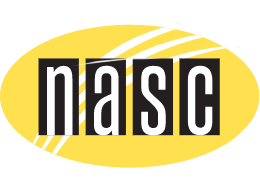Itchy Dog? Try These Home Remedies

Itchy skin, infected ears, chewing on the feet … these common signs of dog allergies are one of the top reasons why dogs visit the vet. But while allergies can be a deep-seated immune issue, there are home remedies and simple nutritional fixes that can really help. Sometimes simple foods can change the way your dog’s immune system works … and that’s good news for itchy dogs.
Nutritional Causes Of Itchy Skin
You may think your dog’s scratching is because he has a food allergy. In fact, food allergies are quite rare in dogs … but that doesn’t mean your dog’s food doesn’t affect his skin. Nutritional deficiencies can have a massive impact on your dog’s skin and coat. This is especially true in puppies and seniors, but it applies to dogs of all ages.
Protein
If your dog doesn’t get enough protein, it can impact his skin health. This can happen if the food itself is low in protein, or if the protein isn’t very digestible. This is more of a risk for dogs eating kibble than raw foods … raw diets contain more protein and the protein is more digestible. Heating foods can also reduce digestibility. Most fresh foods are 95% to 100% digestible while kibble averages about 75% digestibility.
One way to find a kibble with good digestibility is to look for added amino acids. Animal proteins are more complete and offer a wider range of amino acids than plant proteins … which makes them more digestible. So kibbles that use a lot of plant proteins will often have added amino acids. These can include:
- Taurine
- Methionine
- Lysine
If you see added amino acids (they often start with L-), then it may be an indication that the protein in the food is not very digestible. Hypothetically, dog food with 20% protein could provide your dog with more amino acids than one with 30% protein so make sure the label has a lot of animal-based proteins and no added amino acids.
Zinc Deficiency
Zinc is an important trace mineral that plays a critical role in your dog’s immune system. Some breeds of dogs, like Huskies and Malamutes, are prone to zinc deficiency, but it can occur in all breeds. Zinc deficiency is fairly common for two reasons:
- Dogs can’t store zinc, so they need a daily supply in their diet
- Dogs only use about 30% of the zinc in their diet
Dogs with zinc deficiency can often have digestive or immune issues. But it can also cause crusty or thickened skin (especially over the joints and pads of the feet) and hair loss (typically around the eyes and muzzle).
Your vet can test your dog for zinc deficiency and it’s easy to fix with proper nutrition. Meats and fish are rich in zinc, while processed foods will have less. Foods that are high in starch can also decrease the absorption of zinc because they’re rich in an anti-nutrient called phytic acid.
Copper Deficiency
Copper is another important trace mineral that can sometimes be deficient in dogs. Back in the 1980s, most dog foods had copper oxide added as part of their vitamin premix. But in 1997, AAFCO recommended that it be changed to copper sulfate because the bioavailability of copper oxide was low. Today, most commercial pet foods have enough copper.
But if your dog is eating a home-cooked or raw diet, or if you add a lot of treats to your dog’s commercial diet, then copper deficiency can happen if there isn’t enough organ meat added. This is especially true in poultry diets.
The signs of copper deficiency include a dry, dull coat with patches of hair loss. A telltale sign of copper deficiency is a change in coat color due to a loss of pigmentation. The top food sources of copper are beef liver, shellfish, mushrooms, and pumpkin seeds.
Fat Deficiency
Fat is an important source of energy and an important part of every cell in your dog’s body. The first fatty acid to be identified as essential was linoleic acid. Back in the 1970s, pet food packaging wasn’t all that advanced and the bags of food became very greasy … so dog food back then was really low in linoleic acid (and fat in general). As a result, dogs eating those foods started to develop skin and coat issues. This is when scientists discovered that too little fat could cause skin issues.
Even today, many home-cooked or raw foods can be deficient in fat. This is especially true if feeding a low-fat protein like poultry or rabbit. Overall, fresh foods should contain about 10% to 20% fat. But it’s not just the amount of fat that can cause skin issues …
Fat Imbalance
Most dietary fats can be divided into two types: omega-6 and omega-3. Omega-6 fats tend to increase inflammation in the body (with the exception of GLA), while omega-3 fats decrease inflammation.
Animals that eat grasses will have roughly equal amounts of omega-6 and omega-3 fats. But today’s food animals are fed grains and feeds, which are very rich in omega-6 fats. Chicken legs can have as much as 30x more omega-6 than omega-3 fats. This sets your dog up for inflammatory skin conditions. The signs of inflamed skin are varied but can include a dry, dull coat, hair loss, overall itchiness, and dermatitis.
The best way to address fat imbalance is to add anti-inflammatory fats to your dog’s diet. This can come from fish oil, but fish oil only contains one anti-inflammatory fat: EPA. Green-lipped mussel oil provides another anti-inflammatory fat, ETA, while ahiflower, hemp, and evening primrose oil are rich in an anti-inflammatory omega-6 fat, GLA. Safe-Sea is a sustainable source of all three fats.
Lack Of Gut Diversity
Your dog’s digestive tract is home to trillions of beneficial bacteria and microorganisms that help manufacture B vitamins and vitamin K, digestive enzymes, amino acids … and modulate his immune response. In fact, nearly 90% of your dog’s immune cells and capacity live in his gut.
A healthy gut (and immune system) has large bacteria populations and diverse bacteria populations. But this can be threatened by:
- Age
- Stress
- Antibiotics
- Glyphosate and GMO foods
- Drugs, vaccines and chemicals
- Processed foods
- Foods rich in starchy carbohydrates
- High fat diets
- Diets rich in saturated fats
The key to a healthy gut is a varied, fresh food diet … but it’s also important to avoid these common gut stressors. If your dog is exposed to any of the above, then you might see the same inflammatory response that you would see with a diet that’s too rich in omega-6 fats. Since the skin is the largest organ in the body, itchy skin can be the first sign of an unhealthy gut environment. The gut lining will also become inflamed if the bacterial populations are small or not diverse. This makes the gut more permeable, allowing allergens and toxins to trigger an even greater response in the skin.
If your dog’s gut is stressed, probiotics can help. While they don’t really colonize in the gut all that well, they can help:
- Reduce inflammation in the gut
- Crowd out harmful bacteria
- Protect the gut lining
One of the most important probiotics for inflamed guts is Pediococcus acidilactis. It’s been shown to directly reduce inflammation in the gut and reduce permeability. This means fewer allergens can exit the gut and this will help reduce inflammatory skin issues in your dog.
30 Day Itchy Skin Challenge
If your dog has itchy, inflamed skin, here is a simple nutritional approach that can make a dramatic difference for a majority of dogs. You only need to do this for 30 days but you’ll likely see results in two weeks.
Step 1: Increase The Fats and Fat Quality
For 30 days, increase the amount of fats your dog gets, most importantly omega-3 fats. This includes:
-
A double dose of Safe-Sea daily.
This will add all three important fats to your dog’s diet: EPA, ETA and GLA.
-
Give MCT oil daily.
This will increase your dog’s fat content with healthy fats that will be used for energy and not stored in fat reserves.
Step 2 – Support The Gut
While you’re increasing the amount of fat and omega-3 in your dog’s meals, you’ll also want to take care of the gut. A good daily probiotic with prebiotics is Protect but if your dog needs more help with his gut health, Gut Guard should be given for 30 days, followed by Protect. Gut Guard contains anti-inflammatory herbs and Pediococcus acidilactis, which can help seal leaky guts.
Step 3 – Bathe Frequently
If your dog’s skin is inflamed, he might develop a secondary bacterial infection. Bathing your dog every second day is a good way to reboot the bacteria living on the skin and help restore healthy bacteria populations. You should only need to do this for the first week, then reduce the amount to 3 baths in the second week, then twice weekly for the remaining 30 days.
Make sure you choose a truly natural shampoo, without any harmful ingredients. Here’s a useful guide to finding a good quality shampoo.
After 30 days, most dogs show a dramatic improvement and their skin and coat start to become healthy and shiny again. If your dog suffers from itchy, inflamed skin, try this 30 Day Challenge and let us know the results on Facebook or Instagram. Be sure to use the Hashtag #30DaySkinChallenge




